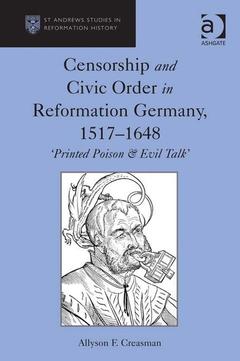Description
Censorship and Civic Order in Reformation Germany, 1517-1648
'Printed Poison & Evil Talk'
Author: Creasman Allyson F.
Language: English
Subject for Censorship and Civic Order in Reformation Germany, 1517-1648:
Keywords
augsburg; city; council; imperial; cities; max; niemeyer; verlag; bei; deinem; Historische Kommission Bei Der Bayerischen; Augsburg City Council; Erhalt Uns Herr Bei Deinem; Uns Herr Bei Deinem Wort; Sebald Beham; Bei Deinem Wort; Bernd Roeck; Urban Reformation; Imperial Police Ordinance; Max Niemeyer Verlag; Samuel Von Pufendorf; Augsburg’s Lutheran; Imperial Aulic Council; Augsburg Confession; Imperial Censorship; Early Modern German City; Religious Peace; Francesco Spiera; Early Modern Public Sphere; Reformation Movement; Emperor’s Edict; Hans Hut; Protestant Censorship; Nuremberg City Council; Lutheran Community
177.01 €
In Print (Delivery period: 14 days).
Add to cartPublication date: 09-2012
Support: Print on demand
Publication date: 05-2017
· 15.6x23.4 cm · Paperback
Description
/li>Contents
/li>Biography
/li>




